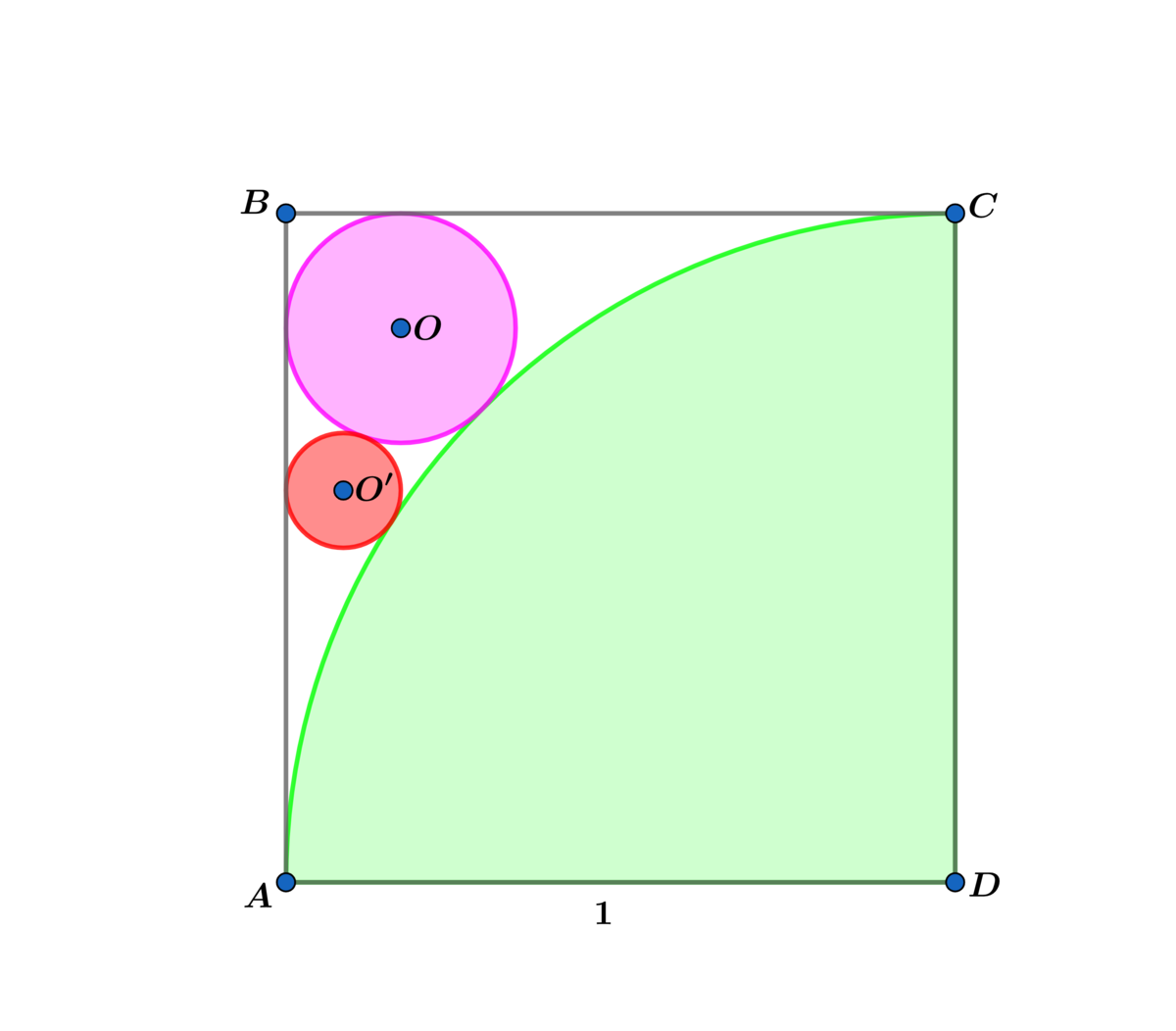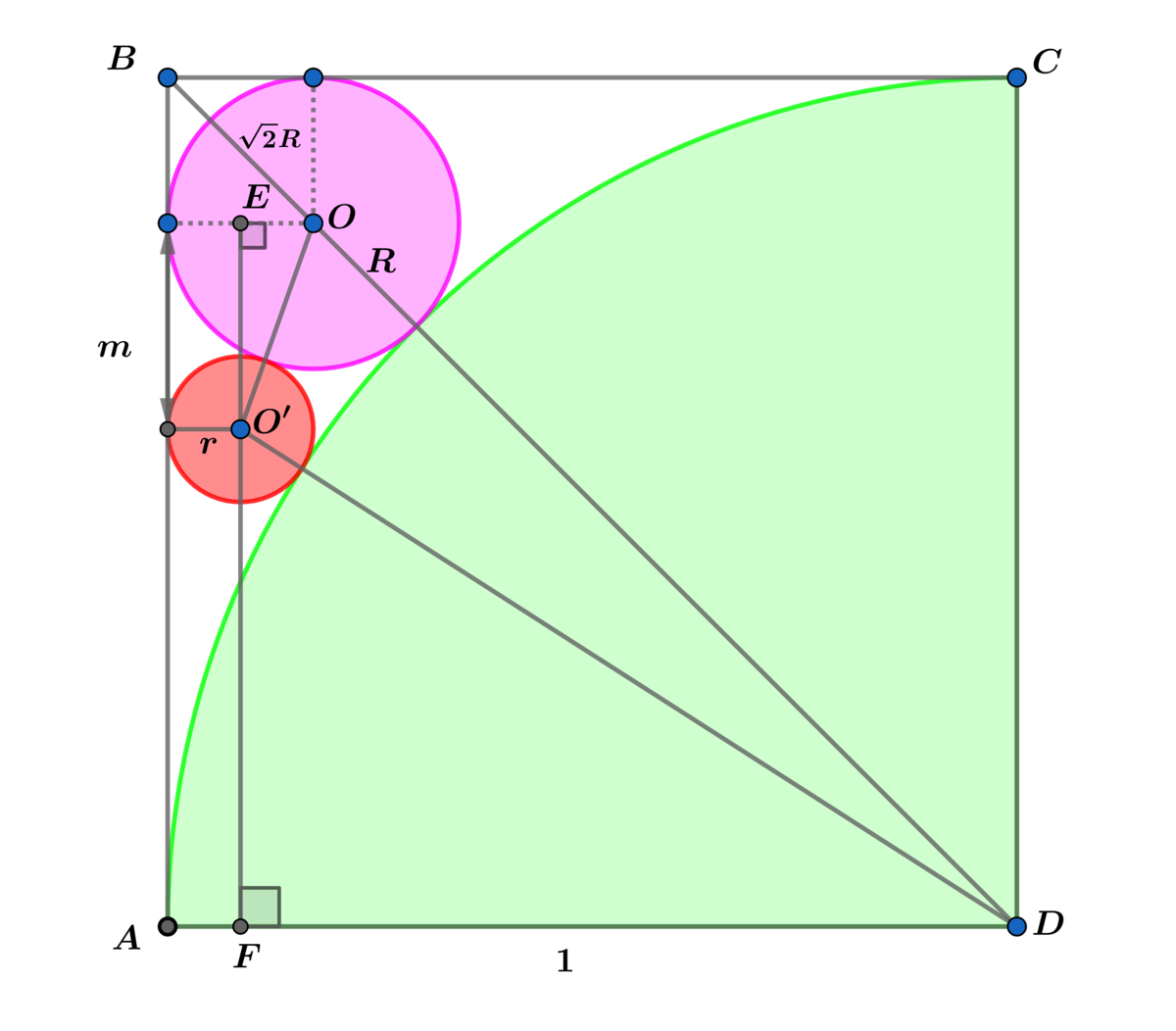Circle Mania

In the diagram above square A B C D has side length 1 . If the pink and red circle are tangent to each other and tangent to the green circle and B C is tangent to the pink circle and A B is tangent to the pink and red circle.
If the radius of the red circle r = β α − β β , where α and β are coprime positive integers, find α + β .
The answer is 5.
This section requires Javascript.
You are seeing this because something didn't load right. We suggest you, (a) try
refreshing the page, (b) enabling javascript if it is disabled on your browser and,
finally, (c)
loading the
non-javascript version of this page
. We're sorry about the hassle.
2 solutions

B D = 2 = 1 + R + 2 R = 1 + ( 2 + 1 ) R ⟹ R = 2 + 1 2 − 1 = 3 − 2 2
Using △ O ′ E O ⟹ m 2 = ( R + r ) 2 − ( R − r ) 2 = 4 R r ⟹ m = 2 R r
and
Using △ F O ′ D ⟹ ( 1 + r ) 2 = ( 1 − r ) 2 + ( 1 − R − m ) 2 ⟹
4 r = ( 1 − R ) 2 − 2 m ( 1 − r ) + m 2 = ( 1 − R ) 2 − 4 ( 1 − R ) R r + 4 R r ⟹
4 ( 1 − R ) r = ( 1 − R ) 2 − 4 R r ( 1 − R ) ⟹ 4 r = 1 − R − 4 R r ⟹
4 r + 4 R r + R = 1 ⟹ ( R + 2 r ) 2 = 1 ⟹ R + 2 r = 1 ⟹
r = 2 1 − R = 2 1 − 3 − 2 2 = 2 1 − ( 2 − 1 ) 2 = 2 2 − 2 = 2 2 ( 2 − 1 )
⟹ r = 4 2 ( 3 − 2 2 ) = 2 3 − 2 2 = β α − β β ⟹ α + β = 5 .
I solved it with the law of cosines for triangle DOO' but it's unbelievably messy. Still, got the same answer. Nice problem, enjoyed it!
Thanks. Your right, the algebra is tedious.
The length of diagonal: ⟹ r p ( 2 + 1 ) r p + r g = 2 a ( 2 + 1 ) r p + 1 = 2 = 2 + 1 2 − 1 = ( 2 + 1 ) 2 1
line A B can be taken as a circle with radius ∞ . Then with Descartes' theorem: k r = k g + k p + k A B − 2 k g k p + k p k A B + k A B k g = 1 + ( 2 + 1 ) 2 + 0 − 2 1 ⋅ ( 2 + 1 ) 2 + ( 2 + 1 ) 2 ⋅ 0 + 0 ⋅ 1 = 6 + 4 2 ∴ r r = k r 1 = 2 3 − 2 2